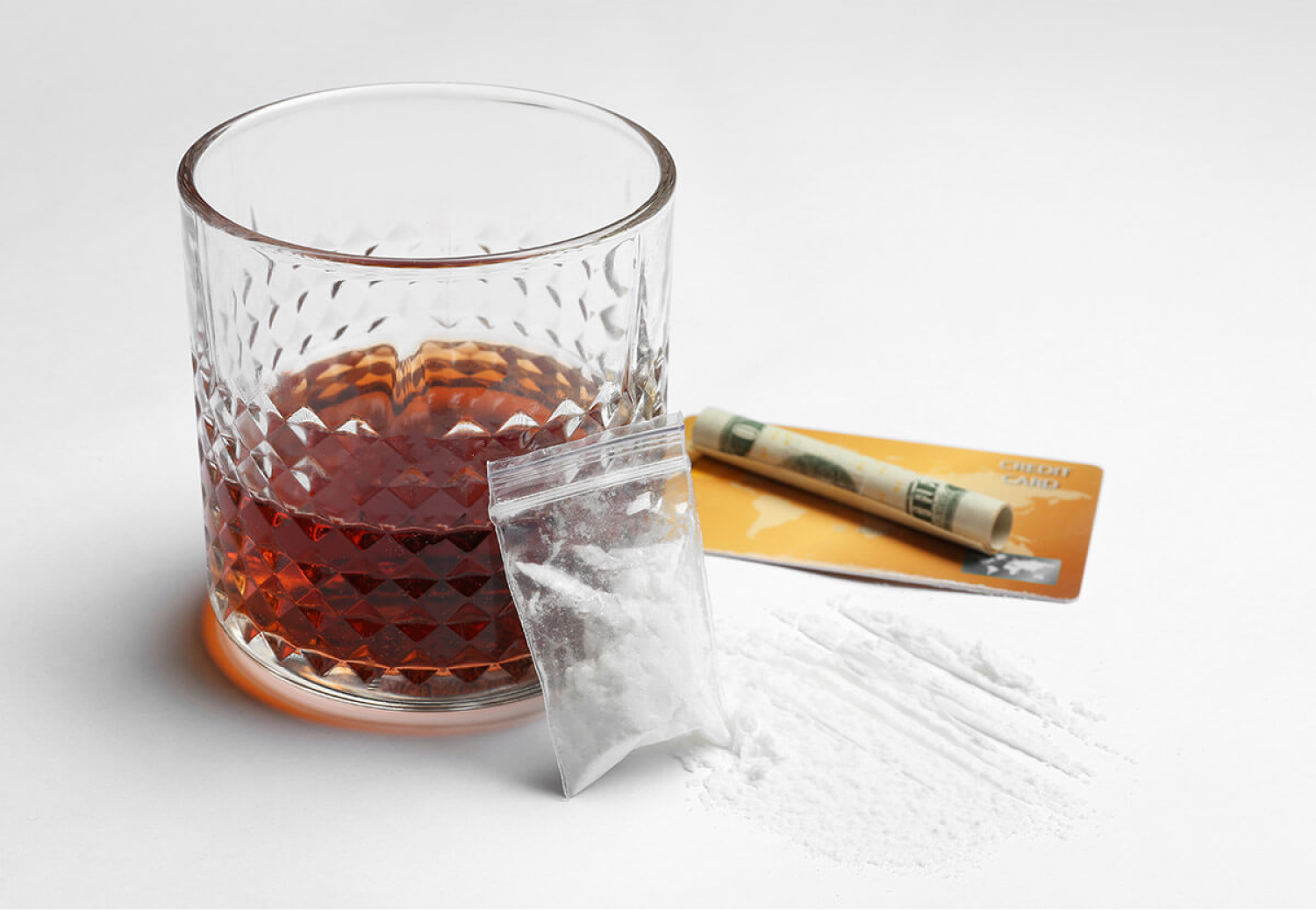
Alcohol and cocaine are two of the most popular recreational substances on the planet. Alcohol is legal and easily accessible to anyone; cocaine is illegal but a highly sought after with the image of it being a high-end drug for the rich and famous. Both substances are toxic in their own way but what happens when they are taken together?
From a general perspective these two substances are usually consumed together. Cocaine is the most abused psychostimulant known to man, and it gives the user a euphoric confident high due to its ability to directly inhibit the reuptake of dopamine, serotonin and norepinephrine into pre-synaptic neurons(1). This inhibition elevates synaptic concentrations of these neurotransmitters, which is responsible for the high cocaine provides. Although the high can be euphoric, cocaine does also come with sides effects such as edginess, paranoia and irritability which is generally due to its effects on norepinephrine. Due to this, it is very common for people to add alcohol to the equation to level out the high and bring some calming effects to their neurological system – but is this safe?
Alcohol is used as a catalyst in chemistry, meaning it enables a chemical reaction and speeds these reactions up where they would usually take a long time. When we consume alcohol and it enters the liver, it can alter the chemical reactions thus changing the way some drugs work within the body. When a person consumes alcohol while cocaine is in their system, it changes its kinetics and metabolism which creates a new byproduct called cocaethylene. Cocaethylene is an ethyl ester of benzoylecgonine and is a psychoactive substance which has pharmacological properties similar to cocaine but has a half-life three to five times that of cocaine(2)(7). It has been shown to be more potent, increasing aspects of the high for the consumer but also the dangers, exerting more cardiovascular toxicity than either alcohol or cocaine alone(3). Because cocaethylene has a slower rate of elimination from the body, it makes it more attractive to the user due to its duration along with its increased potency. However, it greatly increases the risks of seizures, liver damage and compromises the function of the immune system(4).
Cocaethylene causes hypertension and increased systemic vascular resistance, while at high concentrations decreases myocardial function, slows cardiac conduction and is arrhythmogenic(5). The LD50 of cocaethylene is significantly lower than that of cocaine, carrying a 18-25 fold increase in risk for immediate death than cocaine alone(6)(7). Experiments suggest cocaethylene depresses the myocardium which is the muscular center layer of the heart between the outer layer (epicardium) and the inner layer (endocardium). This demonstrates how it’s a major contributor to cardiotoxicity(8).
Human studies show that when cocaine is ingested with ethonal in the system, 17% of the cocaine is converted to cocaethylene with subjects said to of experienced more intoxication with this combination(10). Alcohol also increased peak concentrations of cocaine by about 20%, this is due to alcohol increasing the absorption of cocaine(11). So it’s not just cocaethylene that is possibly dangerous but the fact that alcohol also increases the absorption of cocaine at the same time, this combination increases the potential of toxicity along with overdose. Higher blood concentrations of cocaine along with the presence of cocaethylene was associated with elevated heart rate, increased plasma cortisol concentration and higher cardiotoxicity(11). Some good news is most users of cocaine do not ingest enough alcohol to produce significant amounts of cocaethylene, but when excess alcohol is consumed along with cocaine, concentrations of cocaethylene are very modest according to postmortem studies(11).
I have personally seen people mix this combination of drugs in the past. With my understanding of its toxicity, I worry what this may be doing to people not only in the immediate future but also in the distant. It may increase the ricks of cardiovascular disease (CVD being the number one killer worldwide, taking an estimate of 17.9 million lives each year)(9). With CVD being caused primarily from lifestyle choices, this combination is a factor that may to increase the risks. I want people to be aware of this toxic combination and byproduct, so that they understand what they are potentially doing to their body, allowing them to make changes to avoid these dangers. So next time you are out and having a drink, take a second thought before you do that line, think of your health and heart before you start.
Written by Luke Pavasovic
Director and Naturopath at Alchemic Health
facebook.com/alchemichealth
www.alchemichealth.com
1. https://pubmed.ncbi.nlm.nih.gov/11920678/
2. https://pubmed.ncbi.nlm.nih.gov/9243342/
3. https://pubmed.ncbi.nlm.nih.gov/1432406/
4. https://pubmed.ncbi.nlm.nih.gov/9243342/
5. https://pubmed.ncbi.nlm.nih.gov/12215047/
6. https://pubmed.ncbi.nlm.nih.gov/7501674/
7. https://drugs.ncats.io/substance/FJO3071W5Y
8. https://pubmed.ncbi.nlm.nih.gov/8606535/
9. https://www.who.int/health-topics/cardiovascular-diseases#tab=tab_1
10. https://pubmed.ncbi.nlm.nih.gov/14636972/
11. https://www.sciencedirect.com/topics/neuroscience/cocaethylene